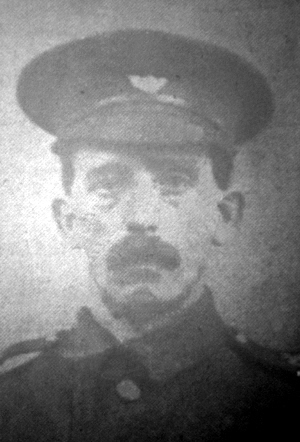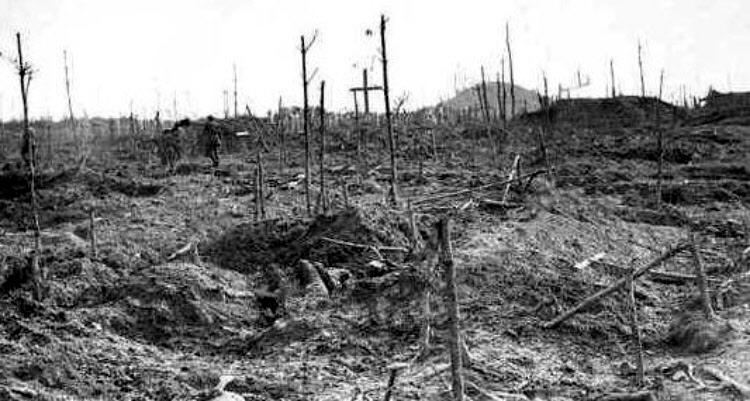
John James Whitehead was born in Ossett on the 30th January 1878, the son of Blackburn-born rag grinder, John Whitehead and his wife, Ossett-born Eliza (nee Thetford), who were married in the autumn of 1871. John James Whitehead had two older sisters, Ann and Mary, and a younger brother, Joseph.
In 1881 John and Eliza and their four children, two girls and two boys, aged between 9 months and 7 years old are living at Gedham, Ossett. By 1891, John Whitehead the elder, now a woollen rag merchant and his wife Eliza are living with their four children at Field Lane, Ossett.
In 1901, the family are now living on Dale street. John James Whitehead is aged 20 years and is working as a rag merchant. In 1911, John and Eliza and three of their children, including John James, are living in a five-roomed home at 7, Cromwell Place, Ossett. The two girls, Ann Elizabeth and Mary Alice are single, aged 35 and 37 years respectively. John James is aged 33 and is still working as a rag merchant.
The youngest child, Joseph, a grocer’s assistant, has left home and is living at 30, Woodbine Street, Ossett with his wife of two years, Edith (nee Lilley), and their one year-old daughter, Mary. Joseph Whitehead, John’s younger brother, of ‘Rose Lynn’, Milton Place, Ossett was buried at Ossett Holy Trinity church on 1st October 1954 aged 74 years.
On the 12th June 1912, John, a 34 year old rag mungo merchant of 7, Cromwell Place, Dale Street, Ossett married 38 year-old spinster and rag sorter, Eliza Radley of 22, South Terrace, Horbury Road, Ossett at the Congregational Church, The Green, Ossett. Eliza died four years later in 1916 aged 42 in the early winter of 1916 leaving John Whitehead as a widower. Her death may have influenced his decision to join the army in August 1916.
John James Whitehead’s army service record has not survived and his medal card indicates only that he was awarded the British and Victory Medals. He did not serve abroad before the 31st December 1915.
The 8th (Service) Battalion of KOYLI was formed at Pontefract in September 1914 as part of K3 and came under command of 70th Brigade in 23rd Division. They moved to Frensham and then to Aldershot in December 1914 before moving on to Hythe in February 1915 and then to Bordon in May. In August 1915, the battalion landed at Boulogne.
Private John J. Whitehead was killed in action on the 29th September 1917 during the Battle of Polygon Wood, which was part of the Third Battle of Ypres. 70th Brigade, which included 8th Battalion, KOYLI, was responsible for the line just to the north of the Menin Road. Polygon wood is situated on a ridge four miles from Ypres and was an important strategic point. It’s capture from enemy forces was a major victory, though short lived, in the Battle of Passchendaele. Private Whitehead’s battalion had moved up to the front line on the 24th September in preparation for the start of the action, which was planned for the 26th September.
The “Ossett Observer” 1 had this obituary for Private Whitehead:
“Church Worked Killed In Action – Another well-known Ossett man has lost his life in the war. He is Private John James Whitehead (39), of the K.O.Y.L.I., widower, and son of Mr. John Whitehead, of 7, Cromwell-place, off Dale-street, Ossett. He joined the military forces in August last year, and went to France shortly before last Christmas. Until his military duties prevented him, he was a particularly active worker in connection with the United Methodist Church and School, Dale-street, and as recently as the beginning of this week arrangements were made by the church officials to present to his father, on his son’s behalf, the Diploma of the Sunday School Union, awarded to Private Whitehead for ‘continuous and valuable service in the Sunday school cause during 25 years.’ In addition to his quarter of a century’s work as a Sunday school teacher, he was for about fifteen years secretary of the Dale-street school, and had been a member of the choir for about a score years. He had also been the secretary of the Ossett Band of Hope Union, and was the secretary of a local cricket league.
According to letters received from Ossett soldiers, Private Whitehead was killed instantly about six o’clock on Saturday morning, September 29th. One of his comrades writing to the deceased’s father says ‘I am very sorry to tell you that your son has been killed while in action. I was very much upset by it, and send my sympathy, as well as the united sympathy of the rest of the lads from Ossett. It is a great loss to his comrades, as we have had many good times together. He was always there at duty’s call, and God has called him away from the stress, toil and fret of the war. I pray that Our Father in heaven will be a comforter to you in this hard time.’ Another local soldier, who says he was not five yards away when Private Whitehead was killed, and felt lucky to get out all right, states that he assisted in burying the deceased at night. He adds: ‘ I can tell you that it nearly broke my heart, as we had been pals ever since coming out. He was well-liked by all the boys.‘
At a gathering at the Dale-street Church on Tuesday evening, the Rev. E. Cook, minister, expressed the sympathy and condolences of the worshippers with the deceased’s relatives.”

Above: Polygon Wood on September 28th 1917 during the battle where Private John J. Whitehead lost his life.
 John James Whitehead left behind his parents, wife and three siblings. He was always remembered by his young niece, Mary Whitehead who was the daughter of his brother Joseph. It is through Mary that his memory lives on as the photograph of this young rag merchant and his service medals are passed down from generation to generation. Today, his medals are worn at the dawn service in Tasmania by his great, great, great, great-niece and nephew.
John James Whitehead left behind his parents, wife and three siblings. He was always remembered by his young niece, Mary Whitehead who was the daughter of his brother Joseph. It is through Mary that his memory lives on as the photograph of this young rag merchant and his service medals are passed down from generation to generation. Today, his medals are worn at the dawn service in Tasmania by his great, great, great, great-niece and nephew.
Private John J. Whitehead died on the 29th September 1917 at the age of 39 years and is remembered on Panel 108 to 111 at the Tyne Cot Memorial, 2 Zonnebeke, West-Vlaanderen, Belgium. The Tyne Cot Memorial to the Missing forms the north-eastern boundary of Tyne Cot Cemetery, which is located 9 kilometres north east of Ieper town centre, on the Tynecotstraat, a road leading from the Zonnebeekseweg (N332). The names of those from United Kingdom units are inscribed on Panels arranged by Regiment under their respective Ranks.
The Tyne Cot Memorial is one of four memorials to the missing in Belgian Flanders which cover the area known as the Ypres Salient. Broadly speaking, the Salient stretched from Langemarck in the north to the northern edge in Ploegsteert Wood in the south, but it varied in area and shape throughout the war.
The Salient was formed during the First Battle of Ypres in October and November 1914, when a small British Expeditionary Force succeeded in securing the town before the onset of winter, pushing the German forces back to the Passchendaele Ridge. The Second Battle of Ypres began in April 1915 when the Germans released poison gas into the Allied lines north of Ypres. This was the first time gas had been used by either side and the violence of the attack forced an Allied withdrawal and a shortening of the line of defence.
There was little more significant activity on this front until 1917, when in the Third Battle of Ypres an offensive was mounted by Commonwealth forces to divert German attention from a weakened French front further south. The initial attempt in June to dislodge the Germans from the Messines Ridge was a complete success, but the main assault north-eastward, which began at the end of July, quickly became a dogged struggle against determined opposition and the rapidly deteriorating weather. The campaign finally came to a close in November with the capture of Passchendaele.
The German offensive of March 1918 met with some initial success, but was eventually checked and repulsed in a combined effort by the Allies in September.
The Tyne Cot Memorial now bears the names of almost 35,000 officers and men whose graves are not known.
References:
1. “Ossett Observer”, 13th October 1917